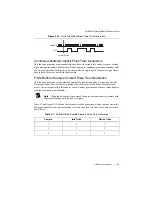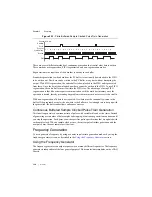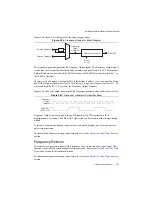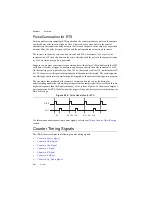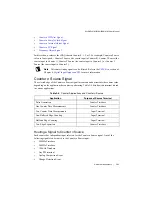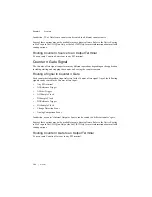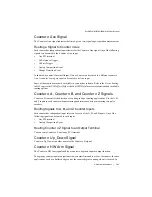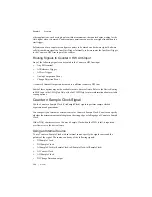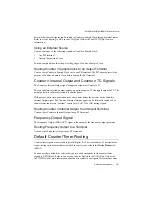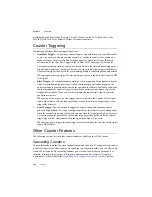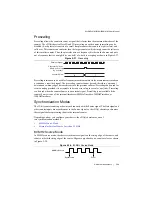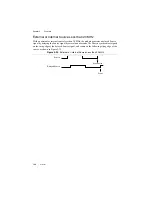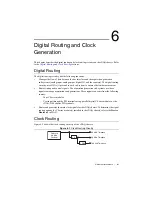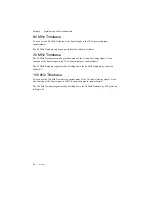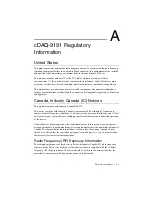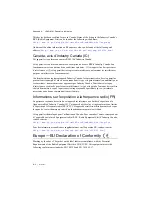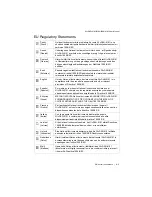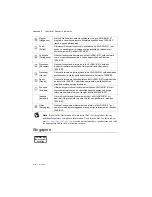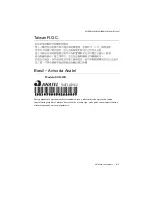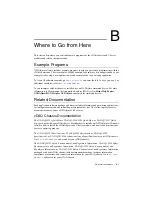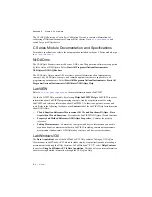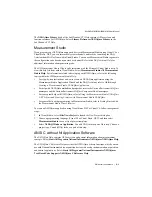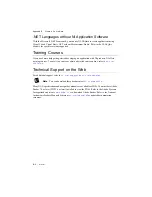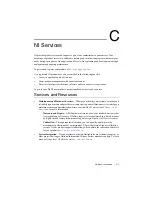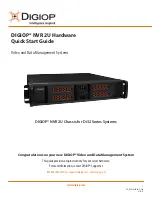
© National Instruments
|
5-37
NI cDAQ-9181/9184/9188/9191 User Manual
Several other internal signals can be routed to Counter
n
Sample Clock through internal routes.
Refer to
Device Routing in MAX
in the
NI-DAQmx Help
or the
LabVIEW Help
for more
information.
Using an External Source
You can route any of the following signals as Counter
n
Sample Clock:
•
Any PFI terminal
•
Analog Comparison Event
You can sample data on the rising or falling edge of Counter
n
Sample Clock.
Routing Counter
n
Sample Clock to an Output Terminal
You can route Counter
n
Sample Clock out to any PFI terminal. The PFI circuitry inverts the
polarity of Counter n Sample Clock before driving the PFI terminal.
Counter
n
Internal Output and Counter
n
TC Signals
The Counter
n
Internal Output signal changes in response to Counter
n
TC.
The two software-selectable output options are pulse output on TC and toggle output on TC. The
output polarity is software-selectable for both options.
With pulse or pulse train generation tasks, the counter drives the pulse(s) on the Counter
n
Internal Output signal. The Counter
n
Internal Output signal can be internally routed to be a
counter/timer input or an “external” source for AI, AO, DI, or DO timing signals.
Routing Counter
n
Internal Output to an Output Terminal
You can route Counter
n
Internal Output to any PFI terminal.
Frequency Output Signal
The Frequency Output (FREQ OUT) signal is the output of the frequency output generator.
Routing Frequency Output to a Terminal
You can route Frequency Output to any PFI terminal.
Default Counter/Timer Routing
Counter/timer signals are available to parallel digital I/O C Series modules. To determine the
signal routing options for modules installed in your system, refer to the
Device Routes
tab
in MAX.
You can use these defaults or select other sources and destinations for the counter/timer
signals in NI-DAQmx. Refer to
Connecting Counter Signals
in the
NI-DAQmx Help
or the
LabVIEW Help
for more information about how to connect your signals for common counter







